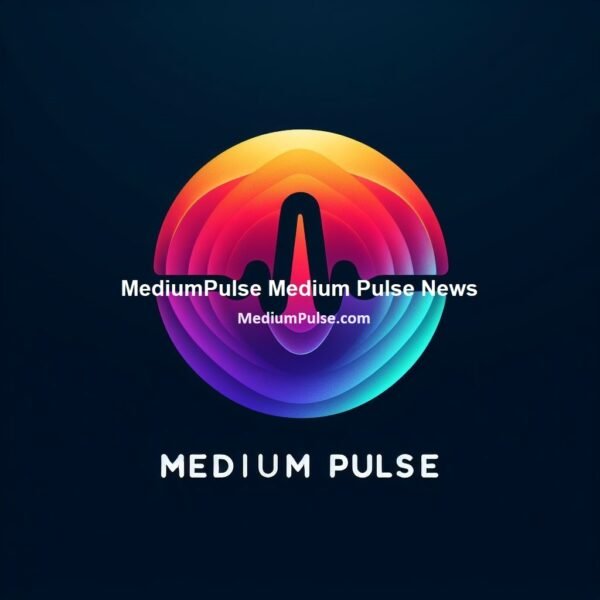A MediumPulse is a type of pulse or energy signal, typically used in medical or electronic contexts, that falls between low and high intensities in terms of amplitude, frequency, or duration. The characteristics of a medium pulse depend on the specific field in which it’s being applied.
In Medical or Physiological Terms
In the context of traditional Chinese medicine (TCM) or ayurveda, a medium pulse is a type of pulse quality that practitioners feel when assessing a patient’s pulse as part of a diagnostic process. A medium pulse:
- Falls between a weak and a strong pulse in terms of force.
- Is neither too fast nor too slow.
- Feels balanced and regular in rhythm.
A MediumPulse in this context is generally considered a sign of a balanced or healthy body state, though its specific characteristics can vary based on individual health conditions and the diagnostic approach used.
In Electronics or Signal Processing
In signal processing or electronics, a medium pulse refers to a signal pulse with moderate energy, duration, or frequency compared to low or high pulses. For example:
- A medium pulse width could represent an intermediate level of data or power transmission.
- Medium frequency pulses are often found in communication systems where a balanced range is necessary for stable data transfer without excessive power usage.
Examples of Usage
- Medical: “The patient’s medium pulse indicates a balanced energy level without extremes.”
- Electronics: “A medium pulse width in radar signals allows for moderate range and resolution.”
The term “MediumPulse” can have different meanings depending on the context. Here are the two most common interpretations:
1. Medium Pulse Rate:
- In the medical context, the pulse rate refers to the number of times the heart beats per minute.
- A medium pulse rate typically falls within the range of 60 to 100 beats per minute for a healthy adult at rest.
- A pulse rate in this range is considered normal and indicates a healthy heart function.
2. Medium Pulse in Technology and Electronics:
- In technology and electronics, a pulse is a brief burst of energy or signal.
- A medium pulse refers to a pulse of moderate intensity or duration.
- The specific characteristics of a medium pulse can vary depending on the application, such as in digital signals, radio transmissions, or radar systems.
The term “MediumPulse” can refer to different contexts depending on the field of study—physics or medicine. Below are the definitions and meanings in both contexts:
In Physics
In physics, a pulse is defined as a single disturbance that travels through a medium, which can be either a vacuum or matter. This disturbance can manifest in various forms, such as sound waves or electromagnetic waves.
- Characteristics of a Pulse:
- It represents a brief disturbance in pressure or energy.
- Pulses can reflect off boundaries, and their behavior changes depending on whether they encounter a fixed or free end.
- Pulses can also cross different media, with specific behaviors based on the densities of the connected media.
The concept of a “MediumPulse” in this context is not explicitly defined but could imply a pulse that travels through a medium of intermediate properties (neither too dense nor too light) affecting how it propagates and reflects.
In Medicine
In medical terminology, a pulse refers to the rhythmic expansion and contraction of arteries as blood is pumped by the heart. It is commonly measured to assess heart rate and overall cardiovascular health.
- Key Aspects of Medical Pulse:
- The pulse rate is typically measured in beats per minute (BPM) and varies based on factors like age and fitness level.
- A normal resting pulse for adults ranges from 60 to 100 BPM.
- The pulse can be palpated at various points on the body where arteries are close to the skin, such as the wrist or neck.
The term “MediumPulse” in this context might refer to a pulse that is neither too weak (hypokinetic) nor too strong (hyperkinetic), indicating a stable cardiovascular condition.
“medium pulse” lacks a specific definition but can be understood within the broader frameworks of physics and medicine as relating to disturbances in energy transmission and cardiovascular measurements, respectively.
“MediumPulse” typically refers to a type of energy pulse, usually associated with lasers, electronics, or similar technologies, where the pulse duration and intensity fall between short and long pulse categories. The specifics can vary depending on the context:
- In Laser Technology: A medium pulse denotes a pulse duration that is intermediate—often measured in milliseconds or microseconds—between short pulses (like femtosecond or nanosecond pulses) and longer pulses. Medium pulse lasers are used in applications where energy needs to be delivered with a balance between power and duration, such as certain types of medical or industrial procedures.
- In Electronics and Signal Processing: A medium pulse may indicate a mid-range duration and frequency of an electrical signal, used to convey information or power without the high intensity or brevity of short pulses, or the long duration of continuous signals.
- Medical Context (e.g., Pulse Diagnosis): While “medium pulse” is less common in medical language for human heartbeats, some alternative medicine or traditional diagnostic methods may describe a medium-strength pulse as one that is neither too strong nor too weak—often indicative of a balanced or average circulatory condition.
The term “MediumPulse” is context-dependent, but it generally represents a pulse with moderate duration and intensity between high and low extremes.



